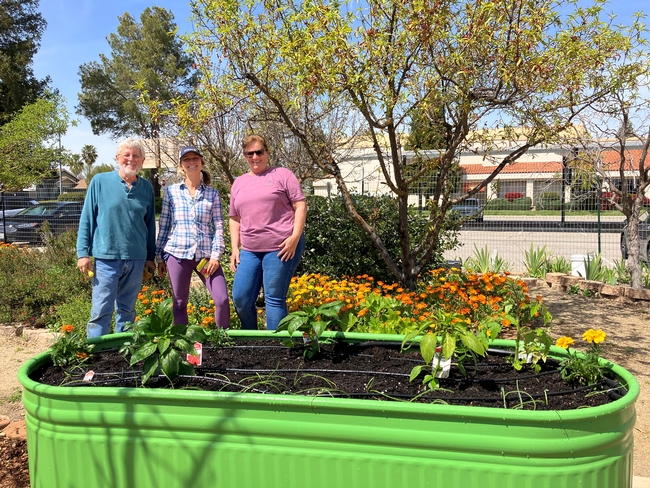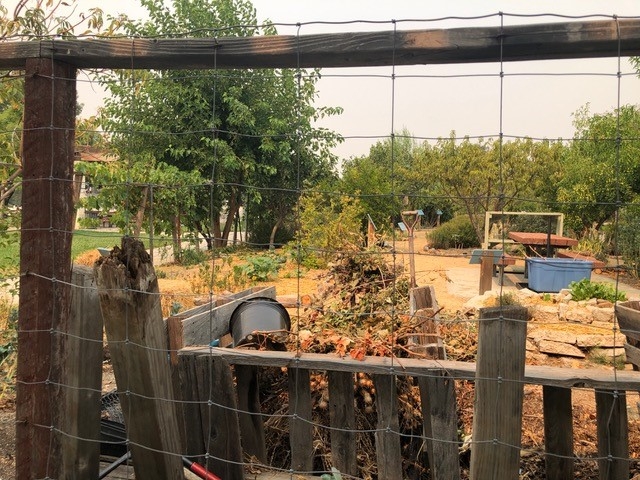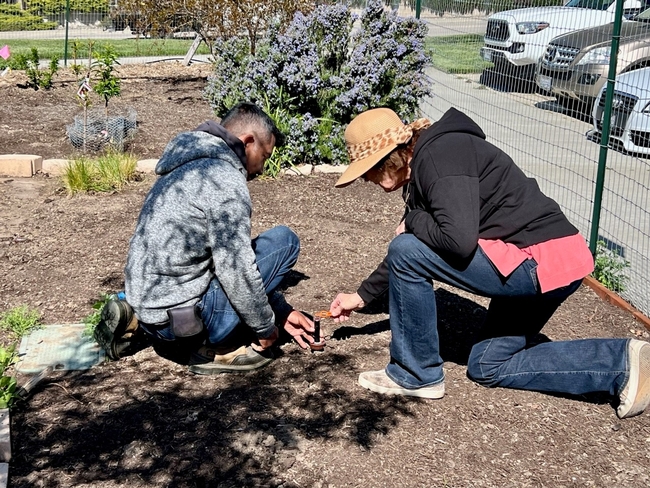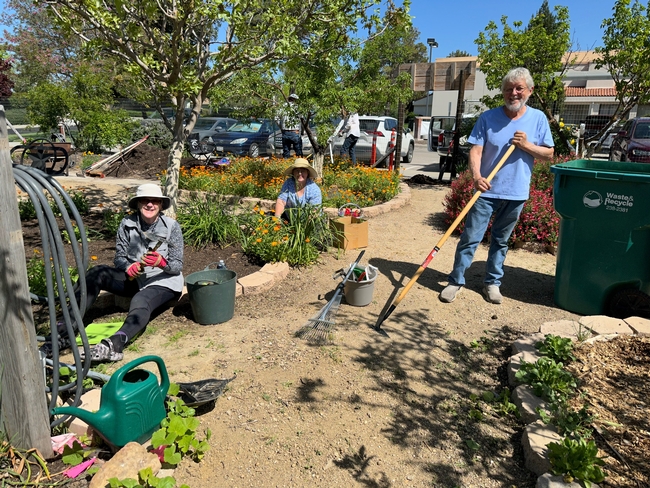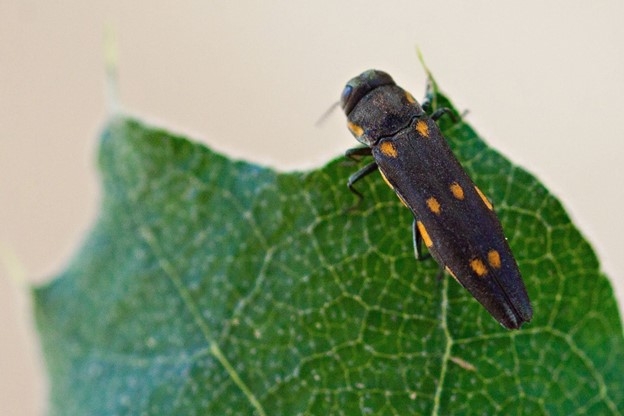- Author: Beth Wray
- Author: Tami Reece
- Author: Sophia Stevens
- Editor: Jennifer Hopkins
UC Master Gardeners, whose mission is to extend research-based knowledge and information on home horticulture, pest management, and sustainable landscape practices to the residents of San Luis Obispo County, is now officially in Paso Robles, welcoming residents to visit their new demonstration garden at the Centennial Park. On Saturday, Aug. 12, the UC Master Gardeners of San Luis Obispo County will host an Open House from 8 to 11 a.m. at 600 Nickerson Drive in Paso Robles.
The garden project has been two years in the making, beginning in August 2020 when the initial conversations started with the City of Paso Robles and the University of California Regents for the UC Master Gardener Program of San Luis Obispo County to take responsibility for the 3,500-square-foot garden space at the city's Centennial Park.
“The City of Paso Robles is thrilled to partner with the Master Gardeners of SLO County to present a beautifully renewed Centennial Park Demonstration Garden for the benefit, enjoyment and education of our community,” said Community Services Director Angelica Fortin. “As we continue to develop this 3,500-square-foot garden space together, we will focus on demonstrating water conservation, providing food to the hungry and inviting community interaction. We believe the garden will become a special place for community members to learn and grow together toward these common goals.”
UC Master Gardener volunteers will be stationed in the garden to discuss the eight different garden plots, which reflect the joint goals of the two organizations for this garden space: developing community green spaces, demonstrating water-wise gardening practices, donating food to local food banks, and providing opportunities for community education.
Soon, workshops will be scheduled at the garden, with topics such as home landscape design, pest identification, and management, pruning, what plants do and don't grow well locally, as well as other topics, keeping in mind the special climate requirements of North County. Workshop topics at the new garden will also be selected based on survey results collected at the upcoming Open House in August. Input from the community on preferred format and scheduling is encouraged and appreciated.
Future plans for the garden will include monthly open garden days, where UC Master Gardeners will be in the Centennial Park Demonstration Garden to answer questions.
“We're so thrilled to engage with the North County and help support their gardening success,” said Maria Murrietta, program coordinator for the UC Master Gardener Program of SLO County. “While we've had a strong presence in San Luis Obispo at the Garden of the Seven Sisters Demonstration Garden, this new garden offers a second beautiful place to host UC Master Gardener Program events and engage with home gardeners who have questions or want to learn more about gardening.”
For more information about the UC Master Gardeners of San Luis Obispo County, call (805) 781-5939 or visit ucanr.edu/sites/mgslo/.
- Author: Samantha Dowdall
- Editor: Jennifer Hopkins
Are you interested in volunteering for the UC Master Gardener Program of San Luis Obispo County? Applications for the 2024 training class are now being accepted!
If you would like to apply in person, pick up and return an application to:
UC Master Gardener Program
2156 Sierra Way Ste C
San Luis Obispo CA 93401
Fee waivers for this 18 week training course are available!
UC Master Gardener Program training class fee waiver . Please note, a limited number of fee waivers are available.
During our comprehensive 18-week training program, you will learn scientific, research-based techniques in home horticulture, pest management, and sustainable landscape practices. You'll learn about plants that will encourage beneficial insects and provide food and safety for birds and other pollinators. This course will help prepare you for sharing your knowledge with others in our community so that they, too, may become successful and environmentally responsible gardeners.
Our volunteers share a keen interest in gardening but we also value the rich and varied skills they bring to the program from their own work and personal experiences. You are encouraged to use these talents to help us improve and enhance our outreach efforts. Examples of these are:
- public speaking
- teaching and training
- research
- being bilingual/multilingual
- organizational skills
- fundraising
- writing
- photography
The following steps are required to become a certified UC Master Gardener Program volunteer:
- Apply online or pick up and drop off an application at 2156 Sierra Way San Luis Obispo CA
- Interview
Upon acceptance:
- Complete a Live Scan fingerprinting and Department of Justice background check.
- Attend an 18-week training class, once a week from January to May.
- Complete weekly reading and home-study assignments and participate in hands-on learning activities.
- Pass an open-book cumulative exam with a minimum score of 70%.
After graduating, certified UC Master Gardener Program volunteers must complete:
- 50 hours of volunteer time in support of any program-related functions within the first year
- In subsequent years, 25 hours of volunteer time and 12 hours of approved continuing education hours per year to enhance their knowledge base to maintain certification
IMPORTANT DATES
To help you decide if this program will fit into your schedule, please review the upcoming deadlines and time commitments:
June 2023 Applications open
September 30, 2023 Applications due
October 2023 Interviews
Early November Acceptance notifications sent
November 14, 2023 Orientation meeting
January – May 2024 Training classes every Tuesday from 12:30-4 PM
May 2024 Graduation
INFORMATIONAL MEETINGS
If you would like to meet some of our volunteers and learn more about the UC Master Gardener Program, please come to one of our informational meetings:
Saturday, September 9, 2023 2:00pm (Zoom)
Tuesday, September 12, 2023 (in person)
2156 Sierra Way, San Luis Obispo 93401
We will be posting updates and reminders as these dates get closer. We hope to see you soon!
If you have questions, please email our help line at anrslomg@ucanr.edu
- Editor: Jennifer Hopkins
Invasive Spotlight: Goldspotted Oak Borer (GSOB)
Adult goldspotted oak borer, Agrilus auroguttatus, on an oak leaf. Photo by Mike Lewis, Center for Invasive Species Research, Bugwood.org
There are several flatheaded boring beetles in California, however only a few are of particular concern. The goldspotted oak borer (GSOB), Agrilus auroguttatus, is a metallic wood-boring beetle that threatens our native trees. Since it was introduced to Southern California on contaminated firewood in the early 2000s, this pest has caused extensive damage to woodlands and native oaks.
What does the goldspotted oak borer look like?
Adult GSOB are 0.4 inch long and 0.08 inch wide with bullet-shaped bodies. They are black with an iridescent green sheen and six distinct gold spots on their back.
What damage does the goldspotted oak borer cause?
Goldspotted oak borers only attack oaks (Quercus spp.). They are particularly damaging to coast live oak and California black oak. Adult beetles lay eggs on host trees and the larvae bore into the wood, feeding on the tree's vascular tissue. The larvae feed on the tree until they pupate into adults and exit the tree, leaving D-shaped exit holes in the bark. Extensive GSOB feeding can girdle trees, disrupting water and nutrient uptake and eventually causing the tree to die.
What can you do about the goldspotted oak borer?
Don't move firewood! The most important way to prevent the spread of invasive wood borers like GSOB, is to buy firewood where you're going to burn it. If you live in an area of Southern California where GSOB is present, avoid planting susceptible trees. If you need to remove an infested tree, keep the cut wood away from healthy oaks and tarp or grind the wood to kill any larvae present. To report possible sightings, fill out the Goldspotted Oak Borer Symptoms Reporting Form at https://ucanr.edu/sites/gsobinfo/What_You_Can_Do/Report_GSOB_Symptoms/
To learn more about this invasive pest visit the UC IPM Pest Notes: Goldspotted Oak Borer or the UC ANR Goldspotted Oak Borer page.


